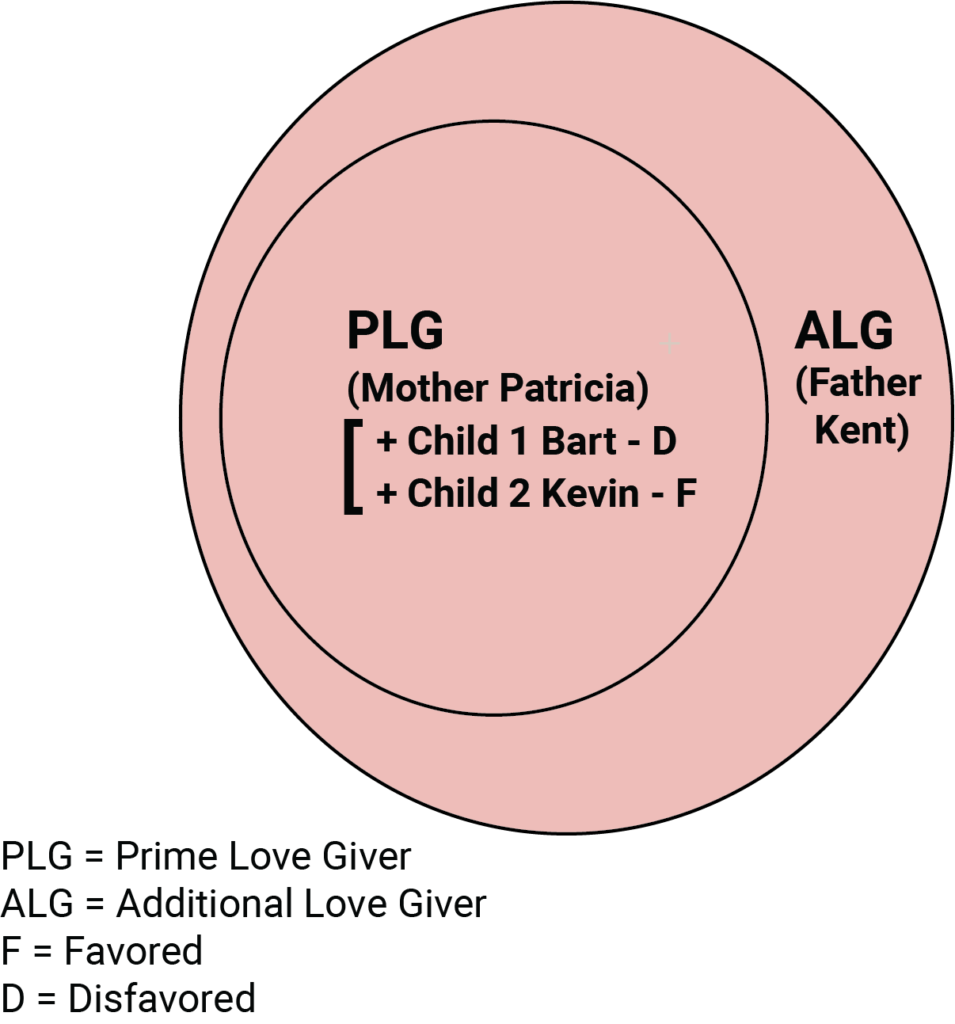August 15, 2021
Today I watched a television program on the Identification Discovery (ID) channel. It was about a “perfect” family called the Whitakers who led a very successful, opulent life in Sugar Land, Texas. As a standard four-person family with two boys the Whitakers are an excellent example of DOLF theory.
In 2003 at the age of 24 Bart Whitaker arranged to have his family killed with the help of a friend and roommate. Harrowing was the fact that some years earlier Bart had already made an unsuccessful attempt to execute his family with two other accomplices, but fortunately that plan was scuttled when the burglar alarm went off. The incident was smoothed over by the family’s religious faith and belief in forgiveness, as well as their respect and influence in the community. With that, Bart escaped serious scrutiny. In the next few years it was believed that Bart had mended his delinquent ways, and that he no longer posed a threat to his family. Yet with the help of a few other friends whom he enticed with the promise of his inheritance, Bart once again hatched a similar plan to kill his family. In this incident the family went out to dinner to celebrate Bart’s supposed graduation from college, even though he had lied about his enrollment and had already dropped out of school. On that fateful evening when the family arrived home, Bart casually mentioned he forgot his cell phone in the car and went back to get it. On entering the home, the other family members were ambushed and systematically shot by the assassins. First was younger brother Kevin who died at the scene, followed by their mother, Patricia, who remained in critical condition until she later died of her injuries. Last was father Kent, who survived the attack only because the gunshot narrowly missed his heart. Bart suffered some superficial injuries too, but these were of course only intended for the sake of feigning his innocence.
DOLF Analysis
How was the Distribution Of Love in the Whitaker family? We might assume that of the two boys, since he wished his family dead, Bart was the Disfavored son. As we might expect when we look next to him, we find his Favored younger sibling Kevin, who is described as gentle and warm-hearted. When we search for the Prime and Additional parents, or PLG/ALG split, we have the advantage that the producer took the trouble to inform us that mother Patricia and younger son Kevin were close. They are said to have enjoyed each other’s company and would stay home together, while the other two found adventure outdoors. We are told that Father Kent and older son Bart seemed to get along well because they went on long fishing and camping trips together. These details about the parent-child relationships were likely included to indicate that, rather than being dysfunctional, this was a normal family in which both children were receiving equal portions of loving attention from two caring parents. Judging the family from the outside on a social level then, each of the boys appeared to be the favorite of one parent.
In DOLF we look for the one parent who is more Emotionally accessible. We can surmise that mother Patricia filled this PLG role. We glean this from the fact that the child to whom she was closer, Kevin, was of a more gentle, pleasant disposition. In contrast, we know that Patricia’s older son Bart, had a more difficult, unruly, Angry temperament, which we can attribute to a more distant relationship between these two. Since Bart wanted his mother dead, we can surmise that he and Patricia were less Emotionally attached to each other than Patricia and Kevin were. In other words, the strings of attachment and LOVE between this Prime Love Giver and Bart would have been weaker than those between Patricia and her younger son, Kevin. We should know that reciprocally, Bart too would not have been as attached to his mother nor LOVED her as much as Kevin did. At least in Bart’s later years, we might say he had even built up hatred toward her. His transition from being a most loved and cherished only child to being the less loved one who was second best must have taken place sometime after Kevin was born, a time when Bart started to build up Anger toward his mother. He became increasingly Angry with her as he got older, eventually losing hope of ever regaining her LOVE. Bart also must have harbored a deep undisclosed resentment toward his younger brother for “stealing” the LOVE that he felt he rightfully owned. In fact, although we do not know the details of the intimate interactions inside the Whitaker family, we can assume that Bart’s Anger with his mother for Favoring his younger brother would have been frothing and festering over the many years since his brother was born, and that it did so throughout the years of the two siblings’ up-bringing, until it finally boiled over and exploded.
By inference now we can place father Kent in the ALG role, since DOLF theory tells us that it is impossible for both parents to play the role of PLG. We can assume that, as a parent in the non-prime role, Kent was more hard-driven and demanding than his spouse, and his strong religious inclinations point us to make this assumption too.

We could complete our diagram of the Whitaker family with two Circles of Love. One Circle of Love would encompass the two boys and their PLG mother. This represents the Emotional attachment of both of the children to their Prime Love Giving parent. A second, larger Circle of Love would then encompass the whole family and include the ALG father. This is the more inclusive Circle of Love that binds the family together from the outside as a group, giving it a psychological “identity” and rendering it a distinct entity of its own.
Using the DOLF model we can complete our assessment of this family’s Emotional dynamics by taking a closer look at the disparity in the personalities of the two boys. Kevin was reported by his friends and others to be of a kind, gentle and pleasant temperament, in line with Favored personality characteristics. In contrast, Bart had tried hard but failed to succeed in measuring up to their family’s expectations. Looking from a superficial, social point of view, it is true that he had long been considered the family’s ‘golden boy’ and it was hoped he would continue their legacy. But from a psychological perspective that would consider how Bart himself felt inside, we know that Bart had been a difficult problem child for his parents and educators to manage, and had been caught stealing computers. This contradicts the information we were given that his negative behavior had subsided and he had got back on track before the second crime. This positive but unrealistic view of him had apparently been promoted because of the family’s influence in the community and their religious faith.
Since Bart wanted his mother Patricia dead, we can surmise that he and his mother were less Emotionally attached to each other than Patricia and Kevin were. In other words, there seemed to be an unwritten consensus that there was a Patricia/Kevin alliance in the family. This means that the ‘strings of attachment’ between this Prime Love Giver and Bart would have been weaker than those between Patricia and her younger son, Kevin. We should know that reciprocally, Bart too would not have been as attached to his mother or LOVED her as much as Kevin did, at least in Bart’s later years. His transition from being the most loved and cherished only child to being the less loved one who was second best would have taken place sometime after Kevin was born. Those early years were a time when Bart started to build up Anger toward his mother, and we can assume he became increasingly Angry with her as he got older, eventually losing hope of ever regaining her LOVE. He also must have harbored a deep tacit resentment toward his brother for “stealing” the LOVE he felt he rightfully owned. In fact, although we do not know the details of the intimate interactions within the Whitaker family, we can surmise that Bart’s Anger with his mother for Favoring his younger brother would have been frothing and festering over many years since his brother was born, and did so throughout the years of the two sibling’s up-bringing, until it finally boiled over.
The DOLF model tells us that if Bart had been sufficiently Emotionally attached to his mother in his later years (a) he would not have wanted her dead, but on the contrary, would have done his best to save her from harm. Secondly, (b) if Bart had felt he “belonged” to the family group, he would not have harbored as much Anger toward the entire family and felt as alienated and outcast as he surely did. He also would not have strayed as much toward allegiances with his peer group which were substitutes for familial acceptance and warmth. As we know from DOLF, it is the ALG who supplies the feeling of ‘belonging’ to the family group. This means that, for whatever reason such as perhaps too much strictness, his father’s role was not effective in making him feel included. Lastly (c) had Bart been the Favored one, he would have had a far more gentle and generous temperament, even as a child, rather than to have turned out the Angry and Anxious adolescent and adult that he became. All in all it leads us to surmise, since he was subject to paranoid and delusional ideation, that we can attribute his mental disturbance to his persistent quest for the kind of LOVE he saw his brother enjoying, feelings that were motivated by jealousy and his fundamental instinct of SIBLING RIVALRY.
There is no doubt that Bart was the Disfavored son inside the microcosm of the four-person Whitaker family. The family constellation is a perfect reflection of DOLF theory founded on the seemingly frivolous, yet all-important determining factor of SIBLING RIVALRY that is driven by none other than pure, raw human instincts in the Mind of a Child. So, even though it is reported that Bart had a close relationship with his Additional Love Giving or ALG father, this Emotional connection must have been far more strained and uncomfortable for the unfortunate Bart to endure than we are led to believe. Despite what it seemed on the outside, the relationship was NOT satisfying for Bart and could NOT compensate for the warmth and LOVE he perceived that was occurring in the adjacent camp between his brother and mother. He was no doubt filled with jealousy and envy of his brother’s loving relationship with their mother, which ultimately boiled over into such hatred of the entire family that his goal became to eliminate them all.
———————to be continued in Bart Whitaker, Part 2……………..


